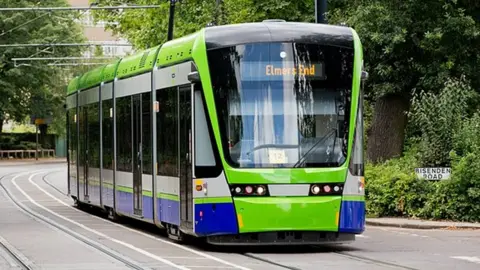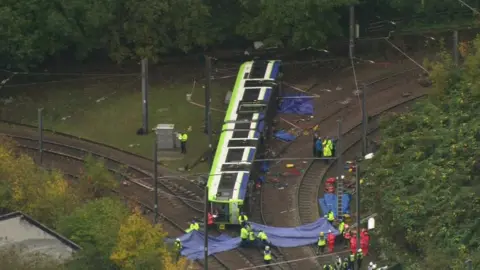Croydon tram crash: Automatic braking introduced in London
 TFL
TFLLondon's trams are being fitted with automatic braking systems three years after a derailment killed seven people.
The safety measure is one of 15 recommended by the Rail Accidents Investigation Branch (RAIB) following its inquiry into the Croydon crash in November 2016.
Sixty one people were also injured when the tram, travelling at almost four times the speed limit, derailed.
TfL said the installation took three years because it "needed to be right".
London will be the first UK tram service to have an automatic braking system.
Yellow beacons on tracks will monitor speeds and automatically apply the brakes if a tram exceeds speed limits.
The tram that crashed on a curve approaching the Sandilands stop in Croydon, was travelling at 43.5mph in a 12mph zone, investigators found.
 EPA
EPA"This is a particularly complex system where you are dealing with trams that are 20-years-old and we're having to install something that interferes... with the acceleration and braking systems of the tram and we need to know it's right," said Mark Davis, Transport for London's general manager of London Trams.
The new braking system would initially be configured for priority high-risk locations, but would be fitted in all trams by the end of the year TfL added.
Automatic braking will operate alongside another system launched in 2017 to warn of driver distraction and tiredness.
'Very reassuring'
During its investigations the RAIB found the driver had taken a micro-sleep and that this was linked to fatigue.
Andy Benham, a tram driver not involved in the crash, has been using a simulator to train for the new safety system.
"It's very reassuring. At the moment a lot of the driving is just down to the driver, so having this as a back-up in case anything should go wrong, you know you are safe," he said.
Other safety measures include cats eyes fitted in tunnels and chevrons painted on bends to help the driver.
